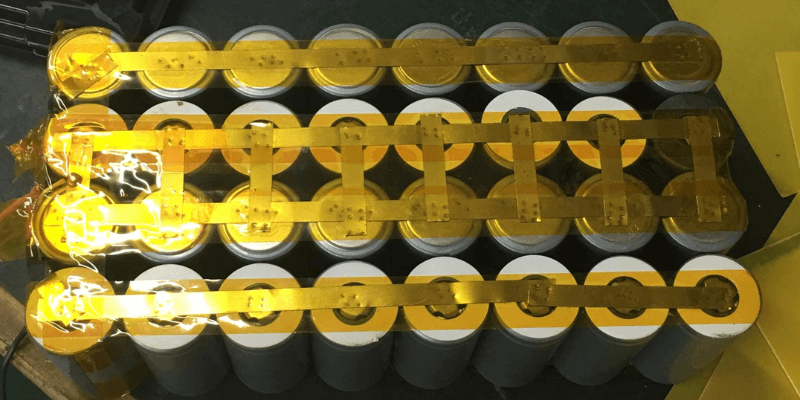Kluczowe wnioski:
- C Szybkość mierzy prędkość baterii - 1 ° C zapewnia pełną moc w ciągu godziny.
- Wyższe stawki C mogą ponosić utratę energii jako ciepło.
- Oblicz szybkość C za pomocą t = 1 / cr; Dostosuj czas ładowania/rozładowywania.
- Wysokie stawki C są niezbędne dla aplikacji głodnych władzy, takich jak drony i startery skokowe.
Baterie mieć coś, co nazywa się “Stawka c.” Mówi nam, jak szybko mogą ładować lub wydawać moc. Rozbijmy to.
Co to jest stawka C?
Pomyśl o szybkości C jako prędkości, z którą działa bateria. Szybkość 1C oznacza, że bateria może dać całą swoją moc w ciągu godziny. Stawka 0,5 ° C? To wolniejsze, dając połowę mocy w dwie godziny.
Bateria C Szybkość stawki
Poniższy wykres pokazuje różne stawki C akumulatorów wraz z czasem usługi. Należy zauważyć, że rozładowanie baterii przy różnych prędkościach C może powodować pewne wewnętrzne straty energii. Przy wyższych prędkościach C pewne energię można utracić jako ciepło, zmniejszając pojemność o 5% lub więcej.
| C Ocena | Czas |
| 0.05c lub c/20 | 20 godzin |
| 0.1c lub c/10 | 10 godzin |
| 0.2c lub c/5 | 5 godzin |
| 0.5c lub c/2 | 2 godziny |
| 1c | 1 godzina |
| 2C | 30 minut |
| 5C | 12 minut |
| 10c | 6 minut |
| 20c | 3 minuty |
| 30c | 2 minuty |
Aby uzyskać dokładne odczyt pojemności, producenci Często oceń akumulatory alkaliczne i ołowiowe przy bardzo niskim poziomie 0,05 ° C lub 20-godzinnym rozładowaniu.
Nawet przy tej powolnej szybkości rozładowania akumulatory ołowiowe rzadko osiągają 100% pojemność, ponieważ są one często przereklamowane. Producenci zapewniają przesunięcia pojemności do dostosowania do rozbieżności, jeśli zostaną zwolnieni z wyższymi prędkościami C niż określono.
Jak obliczyć ocenę C akumulatora
Ocena C akumulatora jest określana przez czas wymagany do naładowania lub rozładowania. Dostosowanie stawki C wpłynie na czas wymagany do ładowania lub rozładowania. Obliczenia jest proste:
- t = czas
- CR = C Szybkość C
Formuły:
- t = 1 / cr (w godzinach)
- t = 60 minut / cr (w minutach)
0Przykład stawki .5c
- Bateria 2500 mAh
- 2500 mAh / 1000 = 2,5AH
- 0.5c x 2,5AH = 1,25 AMP
- 1 / 0,5C = 2 godziny
- 60 / 0,5C = 120 minut
Przykład stawki 2C
- Bateria 2500 mAh
- 2500 mAh / 1000 = 2,5AH
- Dostępne 2C x 2,5ah = 5 wzmacniaczy
- 1 / 2c = 0,5 godziny
- 60 / 2c = 30 minut
Przykład stawki 30c
- Bateria 2500 mAh
- 2500 mAh / 1000 = 2,5AH
- 30C x 2,5AH = 75 wzmacniaczy dostępnych
- 60 / 30c = 2 minuty
Znalezienie oceny C baterii
Mniejsze baterie zwykle mają ocenę 1C, znaną również jako stawka godzinna. Na przykład bateria oznaczona 3000 mAh w ciągu godzinnej stawki ma 1 ° C ocen 3000 mAh.
Zazwyczaj szybkość C znajduje się na etykiecie baterii i arkusza danych. Różny bateria Chemia mogą mieć różne stawki C.
Akumulatory ołowiowe często mają niskie prędkości rozładowania, takie jak 0,05 ° C lub 20-godzinne stawki, podczas gdy akumulatory litowe mogą obsłużyć znacznie wyższe stawki C.
Jeśli ocena C nie zostanie znaleziona na etykiecie lub arkusza danych, wskazane jest bezpośrednio skontaktowanie się z producentem.
Aplikacje wymagające wysokich stawek C
Wiele nowoczesnych zastosowań i urządzeń wymaga wysokich akumulatorów C, w tym modeli RC, dronów, robotyki i startujących skoków pojazdów. Takie zastosowania wymagają potężnych serii energii w krótkich okresach.
Na przykład większość starterów skoków może wymagać do rozładowania stawki 80 ° C, aw branży RC akumulatory o wysokiej opłacie są stosowane do 50 ° C.
Niektóre akumulatory twierdzą, że jeszcze wyższe prędkości C dla maksymalnego rozładowania impulsu, osiągając pełne rozładowanie w kilka sekund. Jednak większość aplikacji nie potrzebuje tak ekstremalnych stawek C.
Wniosek
Znajomość stawki C pomaga wybrać odpowiednią baterię. To jak wybór między samochodem wyścigowym a rowerem – Oba są dobre, ale dla różnych rzeczy. Jeśli nie masz pewności, którą baterię wybrać, skontaktuj się z zespołem inżynierii baterii Holo.
Powiązane artykuły:

